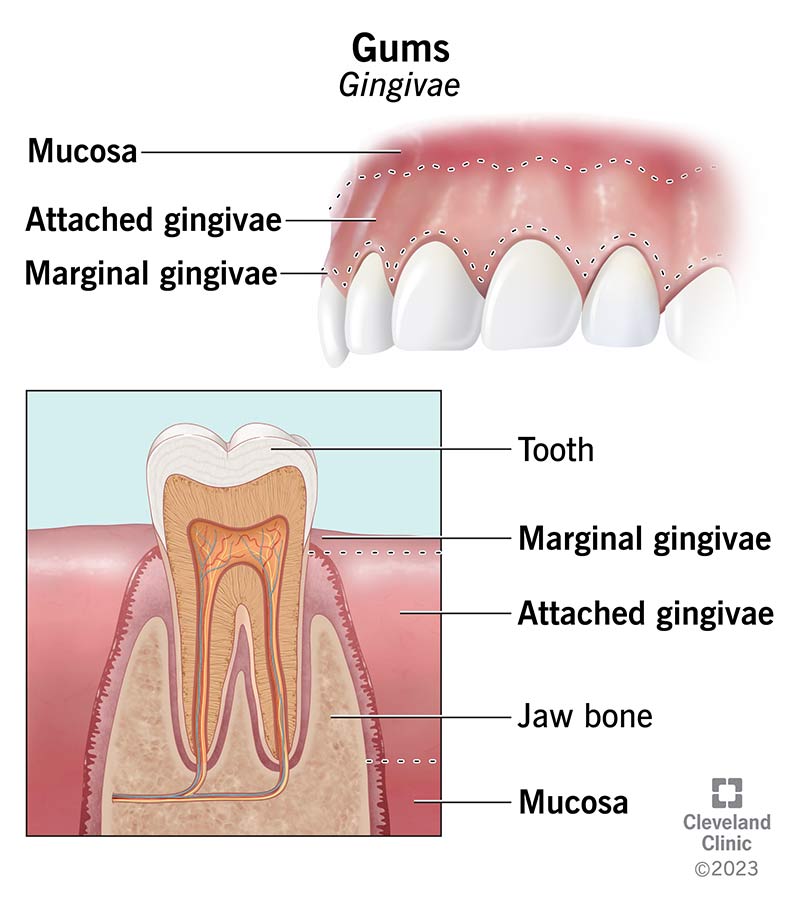Your gums (gingivae) are tissues that surround the base of your teeth and help keep them in place. It’s important to protect your gums from periodontal disease that can damage your gums, leading to tooth and bone loss. Good oral hygiene, like brushing your teeth twice a day, flossing daily and seeing a dentist twice a year, is the best way to have healthy gums.
Advertisement
Cleveland Clinic is a non-profit academic medical center. Advertising on our site helps support our mission. We do not endorse non-Cleveland Clinic products or services. Policy

Your gums (gingivae) are pink tissues in your upper and lower jaws that surround the base of your teeth. Gum (periodontal) disease damages your gums, which can cause tooth loss.
Advertisement
Cleveland Clinic is a non-profit academic medical center. Advertising on our site helps support our mission. We do not endorse non-Cleveland Clinic products or services. Policy
Your gums are the pink tissue just above and below your teeth. (You may need to pull your lips up or down to get a good look at your gums). Your teeth have roots that anchor your teeth to soft connective tissue (periodontal ligament) that lines your tooth socket. Your gums include layers of soft tissue that surround and support your teeth’s roots. These layers are:
Advertisement
Your gums help keep your teeth in place. They cover and protect the part of your jawbone that supports your teeth.
Healthy gums are pink and firm to your touch.
The different types of gum disease are:
Practicing good oral hygiene is the best way to take care of your gums:
Talk to a dentist if you have gum disease symptoms like bleeding or swollen gums that don’t get better. A dentist will examine your gums and mouth, make a diagnosis and discuss any treatment you may need.
Your gums are important because they help keep your teeth in place. You can lose your teeth to periodontal disease that damages your gums. Good oral hygiene — brushing your teeth twice a day and flossing — protects your gums by clearing away the bacteria that can cause gum disease. Talk to a dentist if you have gum issues, like unusual bleeding or swelling, which may be symptoms of early gum disease.
Advertisement
Dentistry plays an important role in oral health. Cleveland Clinic’s experts can design a personalized plan that will keep you smiling for the long haul.

Last reviewed on 05/10/2023.
Learn more about the Health Library and our editorial process.